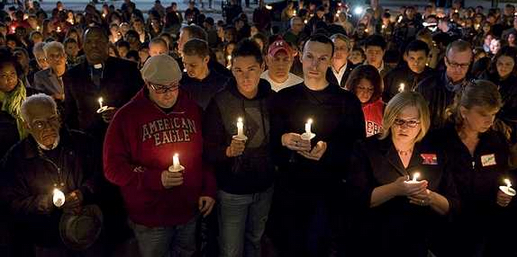![Mourners hold a candlelight vigil in memory of Rutgers University student Tyler Clementi, who committed suicide after being bullied by classmates due to his sexual identity, in this October 3, 2010 photo. [Reena Rose Sibayan/AP]](http://www.jstudentboard.com/reporter/wp-content/uploads/2015/02/JSR_Feb07_Clementi-300x149.jpg)
This social tendency is frequently witnessed amongst teenagers in schools. Such discrimination can result from disparities in racial ethnicity, sexual preference, visual appearance, personal preferences, or skin color.
“I experienced [discrimination] my freshman year in high school during my golf season… It was fun for everyone else to poke fun at the non-white,” said Thomaz Moon, a senior at Canyon High School.
Moon continued, “It was hard because they would taunt me for being the only Asian on the team. They even called me ‘chinito,’ a name I was not used to hearing until then.”
Individual discrimination has greatly improved since the middle of the 20th century, when Blacks and Whites were segregated by law and Asian immigrants were barred by legal quotas from entering America in large numbers. Yet society today still shows disapproval towards individuals with striking differences.
When asked by JSR why such problems exist in the community, Crescenta Valley High School (CVHS) senior Sarah Kim responded, “Insecurities lie underneath it all, causing people to act out against differences they unconsciously feel threatened by.”
“In an evolutionary context,” Kim speculated, “we tend to avoid things that [we think] can harm us…”
According to evolutionary anthropologist Christopher Boehm, author of the book “Moral Origins,” bullying behavior is found in many species because it is adaptive.
“[Bullying happens in nature,]” Boehm has said, “because [bullies] get better food or mating opportunities… In primates, studies have shown that the top bullies have more offspring and therefore their genes proliferate.”
Thus, perhaps some students’ bullying actions rise from the inherent nature of self-protection displayed in the evolutionary history of humankind.
When asked how such problems might be resolved, CVHS senior Olivia Choe said with a shrug, “All I know is that we must take active initiatives to resolve these unjust prejudicial treatments, for they can lead to problems such as depression and loss of life.”
Indeed, in December 2013 a lawsuit was filed against the Glendale Unified School District by the family of Drew Ferraro Ferraro, a 15-year-old student at CVHS who committed suicide in February 2012 after being persistently bullied by his school peers. According to the lawsuit, Ferraro had been the target of sustained harassment since fall of 2010 for his unique preference in music, style, and public display. Multiple unnamed classmates intimidated him with verbal taunts, physical altercations, and cyber-bullying.
In a JSR survey, eight out of 10 students admitted to having experienced depression because they were subjected to hurtful words for being themselves, and four out of the 10 stated that they have even considered transferring to a different school to avoid the social tension. Several online sources have released similar statistics.
It is time for students, children, and adults to embrace and encourage others’ differences to stop the hurt spreading around the world today.

